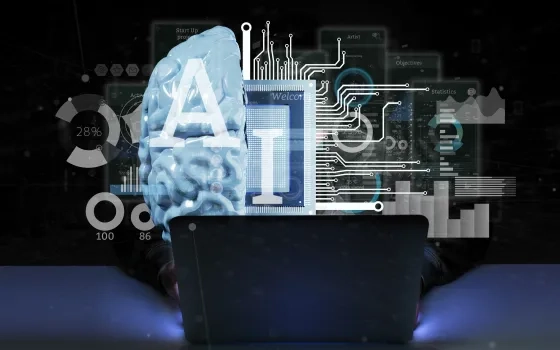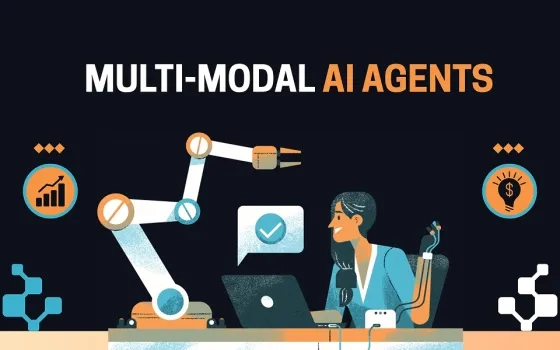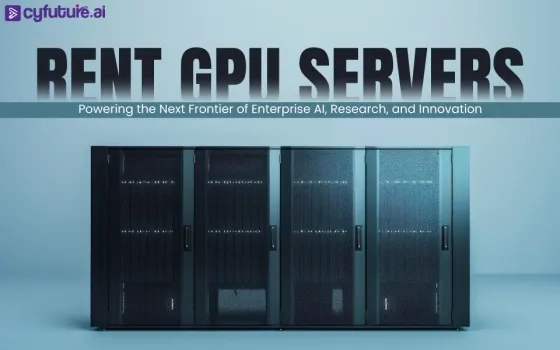What is Artificial Intelligence?
AI is currently one of the hottest buzzwords in tech and with a good reason. To define it “Artificial intelligence is like a smart machine that can learn, make decisions, and take action even when it faces new situations it hasn’t seen before.”
Humans use information to solve problems and make decisions, and what if machines could do the same? Here is where the concept of Artificial Intelligence was coined. To understand AI, think about robots or computers with human-like or super-smart abilities. In movies like Star Trek, characters like Data represent AI, while the regular computer is just a fast version of a basic program. In reality, today’s AI is not as advanced as that.
Let’s compare AI to a regular computer program. Imagine a robot that bends wire to make paper clips. It follows the same steps every time, making identical paper clips. But if you give it a piece of cloth, it won’t know what to do with it because it can only bend the wire. It needs to be reprogrammed to handle new situations.
On the other hand, AI can learn and solve more complex problems, even ones it hasn’t encountered before. For example, in developing driverless cars, companies are not teaching the computer to navigate every intersection in the US. Instead, they’re creating programs that use various sensors to understand what’s happening around them and react correctly, regardless of the specific situation. Building truly driverless cars is challenging because programmers can’t predict every possible scenario, so they need AI systems that can adapt.
Some people believe that AI is not a new idea, and they point to early myths about mechanical men in ancient Greece who could work and behave like humans. But we are not here to find out the mystery.
Well, Today’s world believes Artificial intelligence has created new opportunities to progress on critical issues such as health, education, and the environment. In some cases, AI may do things more efficiently or methodically than humans.
How AI helps in this critical issue can be much easier to understand once we come to know the types of AI.
The use of Artificial Intelligence in the endeavor will significantly change the manner in which organizations work. Organizations are starting to join artificial intelligence in their business tasks with the point of setting aside cash, boosting proficiency, producing experiences, and making new business sectors.
There are computer-based intelligence fuelled applications to upgrade client support, amplify deals, hone online protection, advance inventory chains, let loose laborers from everyday errands, improve existing items, and direct the path toward new items. It is difficult to think about a zone in the undertaking where man-made intelligence – the reproduction of human cycles by machines, particularly PC frameworks – won’t have a profound effect.
Endeavor pioneers resolved to utilize artificial intelligence to improve their organizations and guarantee a profit from their venture, notwithstanding, face enormous difficulties on a few fronts:
The space of computerized reasoning is changing quickly due to the gigantic measure of artificial intelligence research being finished. The world’s greatest organizations, research foundations, and governments around the world are supporting significant exploration activities on artificial intelligence.
There are a huge number of man-made intelligence use cases: man-made intelligence can be applied to any issue confronting an organization or to humanity writ huge. In the Coronavirus flare-up, computer-based intelligence is assuming a significant part in the worldwide exertion to contain the spread, recognize areas of interest, improve patient consideration, distinguish treatments, and create antibodies.
What are the 4 types of AI?
Reactive AI
One fundamental form of artificial intelligence is reactive AI, designed to deliver a consistent output based on the given input. These machines react identically to repeated scenarios without the ability to learn or comprehend the concept of time.
Here are the examples:
Amazon’s similar product shopping recommendations
Email spam filters
Chess-playing supercomputer
Reactive AI marked a significant milestone in the progress of artificial intelligence, yet its capabilities are confined to their original designated tasks. Consequently, they possess inherent limitations that call for enhancements. Building upon this groundwork, scientists pioneered the subsequent generation of AI.
Limited Memory AI
Limited memory artificial intelligence (AI) leverages historical data and observational information to acquire experiential knowledge. By assimilating past actions or data, this type of AI enables predictions and executes intricate classification tasks. Presently, limited memory AI represents the most widely employed form of AI.
Example:
Autonomous vehicles. It uses Limited Memory AI to observe the speed and trajectory of other cars, these vehicles effectively interpret the surrounding road conditions and make necessary adjustments, thereby enhancing safety.
Nevertheless, it is important to note that limited memory AI, as its name suggests, has inherent limitations. The data processed by autonomous vehicles is transient and lacks persistence in the vehicle’s long-term memory.
Theory of Mind AI
Introducing the theory of mind AI, a groundbreaking advancement that brings us closer to engaging in profound conversations with emotionally intelligent robots possessing human-like appearance and speech capabilities.
This remarkable AI technology empowers machines with genuine decision-making capabilities akin to those of humans. By assimilating emotions and retaining this information, machines equipped with the theory of mind AI can dynamically adapt their behavior while interacting with individuals. Nonetheless, the realization of the theory of mind AI confronts several challenges due to the inherent fluidity of human communication, which involves rapidly shifting emotions. Recreating such intricacies becomes increasingly complex as we strive to develop machines that are increasingly emotionally intelligent.
Example:
All-know Humanoid robot “Sophia”, established by Hanson Robotics in Hong Kong, demonstrates the capacity to recognize faces and respond to interactions by employing its own facial expressions.
With the advancement of the theory of mind AI, we are venturing toward a future where machines possess a deeper understanding of human emotions and can effectively adapt their responses, enabling more meaningful and authentic interactions between humans and robots.
Self-Aware AI
Self-aware AI, the pinnacle of artificial intelligence, represents a remarkable advancement in the field. When machines possess the ability to recognize and comprehend not only their own emotions but also the emotions of those around them, they attain a level of consciousness and intellect comparable to human beings. This advanced form of AI exhibits desires, needs, and emotions, further blurring the boundaries between machines and humans.
Machines equipped with self-aware AI possess a profound awareness of their internal emotional and mental states. Unlike other AI variants, they can draw inferences such as determining that their anger arises from being cut off in traffic. This capability is currently beyond our reach due to the lack of suitable hardware and algorithms.
Looking ahead, we contemplate the possibility of developing a fifth type of AI, pushing the boundaries of artificial intelligence even further. How far will we progress in the next decade toward achieving a theory of mind and self-aware AI? Is it conceivable that we might witness the emergence of a super-intelligent AI surpassing human intelligence? Only time will unveil the answers to these questions.
Nonetheless, grasping the distinctions between various types of AI will provide valuable insights into the advancements of this scientific discipline as we continue to push our limits.
Here are the 4 types of AI and their key features, listed for easy reference and comparison.
| AI Type |
Follows
Rules |
Can Learn |
Has Memories |
Knows Other Minds Exist |
Aware of Emotion |
True AI |
| Reactive AI |
✓ |
|
|
|
|
|
| Limited Memory AI |
✓ |
✓ |
limited |
|
|
|
| Theory of Mind AI |
✓ |
✓ |
✓ |
✓ |
✓ |
|
| Self Aware AI |
✓ |
✓ |
✓ |
✓ |
✓ |
✓ |
How does artificial intelligence work?
A considerable lot of the undertakings done in the venture are not programmed but rather require a specific measure of knowledge.
- Extensively characterized, insight is the ability to gain information and apply it to accomplish a result: The activity taken is identified with the points of interest of the circumstance as opposed to being done methodically.
- Getting a machine to act as such is the thing that is for the most part implied by man-made reasoning. In any case, as artificial intelligence specialists make careful arrangements to state, there is no single or basic meaning of artificial intelligence.
- Some characterize computer-based intelligence freely as an electronic framework that shows conduct that is normally considered as requiring knowledge. Others characterize artificial intelligence as a framework able to objectively tackle complex issues or make proper moves to accomplish its objectives in whatever true conditions it experiences.
- At a fundamental level, computer-based intelligence programming centers around three intellectual abilities: Getting the hang of, thinking, and self-rectification.
The learning part of man-made intelligence programming centers around procuring information and making rules for how to transform information into noteworthy data. The standards, called calculations, give figuring frameworks bit-by-bit directions on the best way to finish a particular errand. The thinking angle includes artificial intelligence’s capacity to pick the most fitting calculation, among a bunch of calculations, to use in a specific setting.
The self-correction component centers on the AI’s capacity to continuously refine and enhance an outcome until it attains the intended objective.
Source: https://newvision-software.com/blogs/guide-to-artificial-intelligence-in-the-enterprise/




























